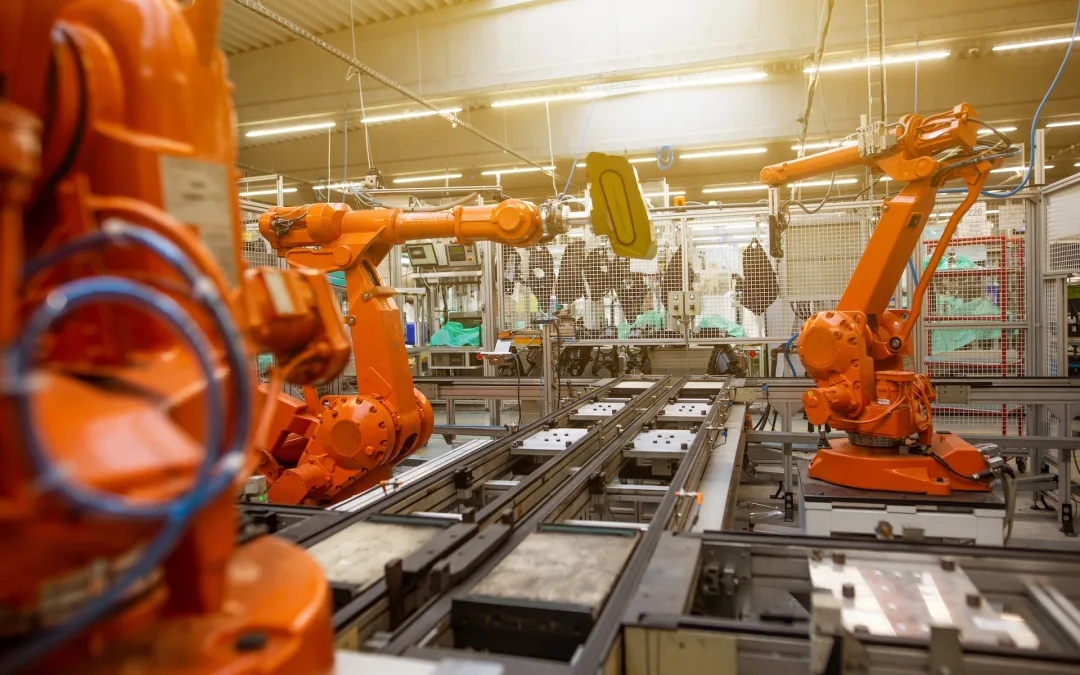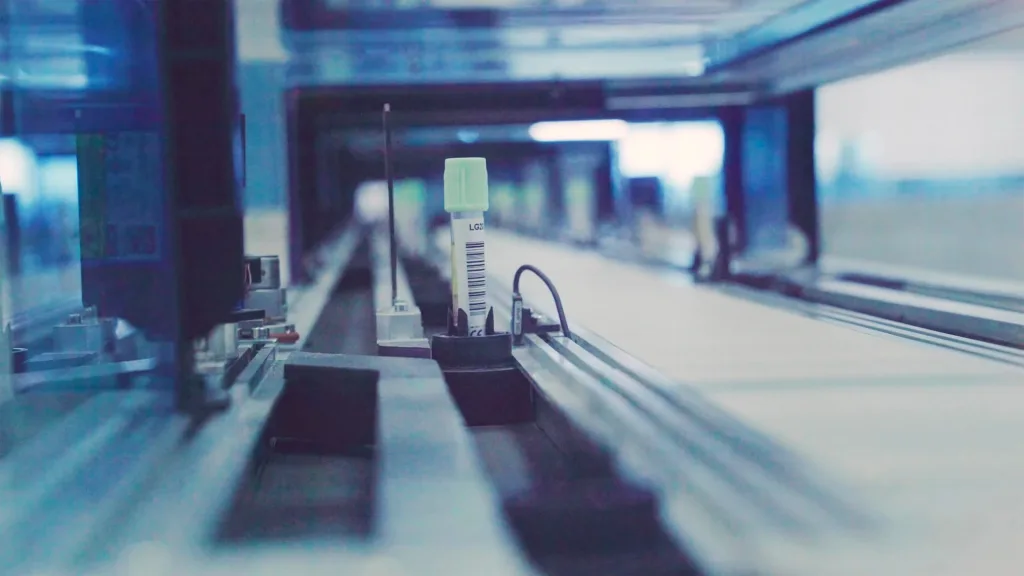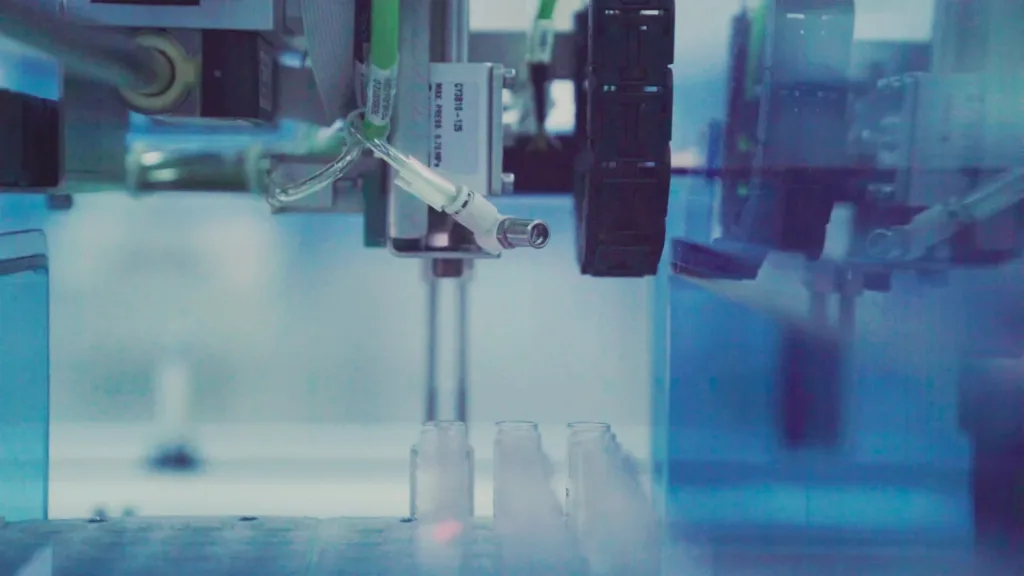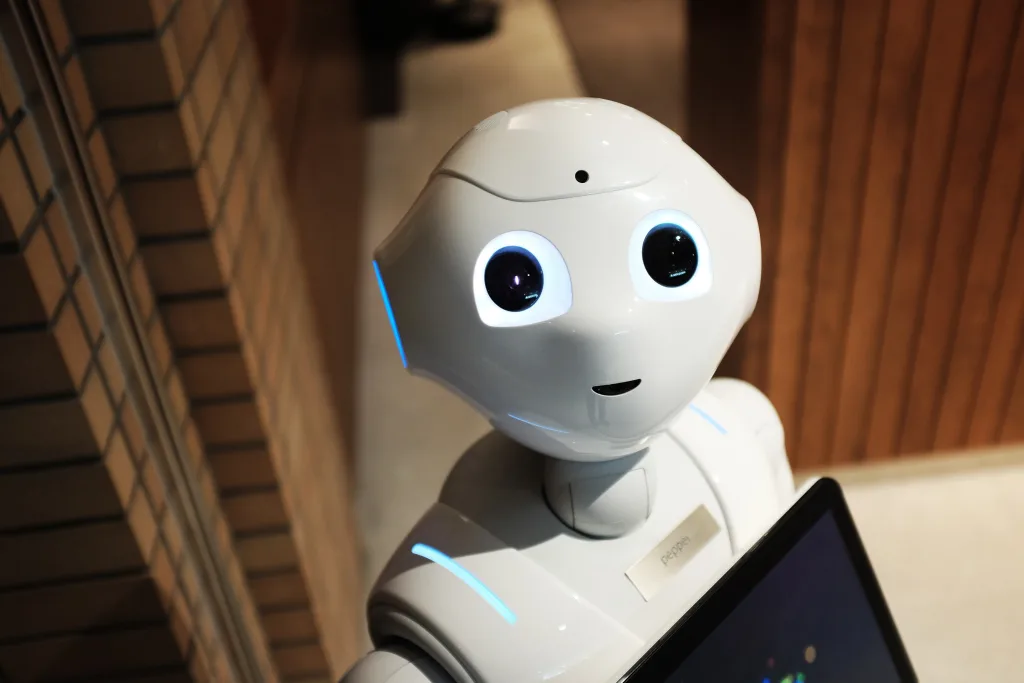In the excellent paper, From Robotic Process Automation to Intelligent Process Automation (Chakraborti, 2020), the author considers how, over the last decade, Robotic Process Automation (RPA) has pushed forward business process efficiency in fascinating ways. However, he suggests we now sit at an “inflection point” within this technological trend, with intelligent automation emerging as the logical progression of RPA.
Chakraborti cites the new paradigm of Intelligent Process Automation that pairs business process automation with machine learning (ML), artificial intelligence (AI), and customer data.
RPA is another critical component of intelligent automation. The two concepts are so intertwined that there is a fair degree of confusion about where intelligent process automation starts and where robotic process automation ends.
This article will explore the differences and commonalities of both disciplines and show where they intersect and overlap. We will also share some intelligent automation examples alongside industry use cases.
What is Robotic Process Automation?
Robotic Process Automation (RPA) refers to a set of technologies enabling various business process automation (BPA) objectives. We can define a business process as a set of tasks that deliver organizational goals. For example, a business process can be something as simple as running a credit check on a loan application.
The steps required for a credit check involve pulling a client’s name from internal documents, making a request to a credit agency, and then feeding the result back into internal systems. In traditional business environments, these tasks are handled manually. However, business process automation uses robots to complete these tasks, hence the term Robotic Process Automation.
RPA tasks need to be rule-based and predictable. They need clearly defined triggers, inputs, and outputs. As such, exception handling is something that can throw them off. Anomalies or exceptional circumstances — or anything requiring thinking on the fly — are not tasks RPA can handle. Of course, that’s not to say that exception handling is a foreign concept in RPA development.
There are many scenarios where a bot can’t complete a task because of an issue with security permission or incomplete data. Developers can build around these exceptions. For example, imagine a scenario where you create an RPA process to transfer invoice data to a database, but the database is down. You can instruct the robot to keep trying at particular intervals until it connects with the database. However, once a maximum number of tries has been reached, it will throw a business exception so a manual worker can remedy the situation.
What we’ve described above is a simple scenario. However, you may need to explore intelligent process automation to build more resilient and robust processes that deal with exceptions independently.
For a deeper dive into the subject, read our Complete Guide to Robotic Process Automation (RPA).
What is intelligent process automation (IPA)?
Intelligent process automation refers to a blend of technologies that help businesses automate existing workflows and processes. As far back as 2017, McKinsey has highlighted the benefits of intelligent automation. The consultancy firm’s widely-consumed paper, Intelligent process automation: The engine at the core of the next-generation operating model, outlines five core technologies that come together to make intelligent automation possible.
They are:
1. Robotic process automation (RPA):
A suite of tools that perform predictable, repetitive, and well-defined tasks that were traditionally the domain of human workers
2. Machine learning and advanced analytics:
Advanced algorithms that are trained to find patterns in vast historical data sets so they can provide insights and predictions with a speed and accuracy that are impossible for human researchers.
3. Natural language generators (NLG)
As evidenced by the success of tools like ChatGPT and Pi, natural language generators can produce text and other creatives to facilitate communication between humans and technology.
4. Smart workflows:
A business process software that manages the workflow between humans and machines, ensuring smooth delivery, tracking, and reporting.
5. Cognitive agents:
Smart chatbots that use a combination of ML and NLP to provide automated customer service representatives reduce the burden on service staff and, in some cases, excel at selling and understanding customers.
The technologies listed above are the basic building blocks forming an IPA solution. Although implied, we would also add Computer Vision Technology (CVT) to the list of tools that make up IPA technology.
The similarities between RPA and IPA
While RPA and IPA are distinct technology categories, they have a fair degree of crossover. Here are some of the similarities between RPA and IPA.
1. They’re both automation tools
The most apparent connection between RPA and IPA is that both tools exist to automate business processes. While each solution takes its own approach and uses different types of technology to achieve its objectives, at heart, their ethos is to handle tasks that humans traditionally perform and find ways to do them more efficiently, cost-effectively, and accurately.
2. RPA is a central part of IPA
Another important similarity between both technologies is the fact that RPA is a core component of IPA. While machine learning and other tech that mimic human cognition are key parts of IPA, the automations are built upon an RPA bedrock.
3. RPA and IPA share similar benefits
RPA and IPA also share many of the same business benefits. For example, they help businesses reduce costs, save time, boost productivity, increase employee job satisfaction, meet compliance standards, improve service, and reduce human error.
The differences between RPA and IPA
While RPA and IPA have many commonalities, there are some points of difference you need to understand.
#1. Scalability
While RPA excels at automating discrete tasks, orchestrating complex workflows or handling unstructured data is a common challenge. IPA offers a mix of tools that help with scaling bottlenecks, such as unstructured data or decision-making.
#2. Real-time learning and adaptation
RPA is a perfect solution for tasks that take a predictable, step-by-step path. By definition, it follows instructions. On the other hand, IPA can learn and adapt in real-time thanks to features like ML.
#3. Intelligence
Intelligence is tricky to define. However, we all understand that human thinking uses various tools like logic, reasoning, learning, planning, and problem-solving to generate answers or predictions based on information.
RPA tools can process information, but only via a strict set of rules. Basically, it uses if/then/else logic to handle business processes. In effect, RPA mimics human cognition, but only because it is given a map.
Intelligent automation, on the other hand, processes data in a way that more closely resembles human cognition. Because intelligent automation tools use AI, they can step outside the bounds of following instructions and adapt and adjust to changing circumstances, unstructured data, and other exceptional factors that can stump RPA tools.
#4. Handling unstructured data
RPA helps teams deal with deterministic tasks. As such, it relies on predictable inputs, such as structured data. However, when it comes to dealing with unstructured data or any information that goes off the reservation, we reach the upper bounds of RPA tools.
Dealing with structured data often falls on manual workers. Because there is a fair amount of decision-making and interpretation involved, it makes sense to use human cognition. However, intelligent automation can handle unstructured data thanks to its use of AI technologies like machine learning.
It’s worth noting that RPA tools can be used to turn unstructured data into structured data. For example, using natural language processing (NLP) or optical character recognition (OCR) tools helps translate this data into something that an RPA can work with. However, the nature of unstructured data makes this process complex and requires the creation of multiple templates capable of handling the job. This reality can lead to scaling issues within RPA solutions.
#5. RPA is more cost-effective
While IA tools have a broader scope than RPA software, these extras come at a cost. One of the most appealing aspects of automation tools is their proven cost savings. However, considering their relative price tags, RPA software is more accessible to most of the market.
Intelligent automation is a more flexible solution that can work in a broader range of environments. Yet, not every business has complex automation requirements. Depending on the scope of the business processes you need to automate, RPA solutions can provide everything you need.
#6. RPA is quicker to implement
Intelligent automation tools provide solutions to a broad range of problems. However, when it comes to fast implementation times, this complexity becomes a slight negative. RPA tools are simpler, and therefore, implementation is less expensive and less time-consuming. For leaders under pressure to achieve digital transformation across their businesses, RPA solutions can offer a quicker path to generating value.
#7. IPA tools have a steeper learning curve
Again, the relative complexity of these tools creates advantages and disadvantages. By nature, adopting IPA tools requires highly technical features like machine learning.
There is still hope for non-technical teams. Intelligent automation consulting firms can do much of the heavy lifting and process design. What’s more, IA tools are becoming more user-friendly by the day.
Intelligent process automation examples and industry use cases
According to research, 120 zettabytes of data will be produced in 2023. Each year, the volume of data produced worldwide increases by around 20% to 25%. According to MIT Sloan, about 80% of this data is unstructured. While RPA tools have allowed companies to do a lot with structured data, it’s clear that text, audio, videos, emails, social media content, server logs, sensor logs, and satellite imagery could offer remarkable opportunities.
The best way to understand the capabilities of intelligent business automation is through practical, real-world examples and use cases. Here are some ways intelligent automation technology can help in particular industries.
1. Customer service
Customer service expectations have grown dramatically in recent years. The modern consumer demands always-on, self-service options with a high degree of personalization. Intelligent automation helps businesses offer the expected level of custom care without the high overheads associated with human workers.
Chatbots powered by natural language processors and connected to customer relationship management (CRM) platforms can offer excellent customer experiences. When allied with automated email handling, predictive analytics, and sentiment analysis, businesses have omnichannel care that anticipates problems and helps drive customer retention.
2. Healthcare
Healthcare has been a significant adopter of intelligent automation. Global ill-health means hospitals are getting busier, with many creaking under the pressure. Tight budgets and overworked staff highlight the need for greater operational efficiency, especially in administrative tasks like patient enrollment, insurance processing, scheduling, billing, and more.
3. Finance
The finance industry has rightly earned a reputation as being at the forefront of cutting-edge technologies. As early adopters of RPA technology, the industry has continued to find ways to drive efficiency and meet regulatory burdens. Intelligent automation is used across the financial space to help with fraud detection and compliance. However, the tech also helps with operations, increasingly streamlining decision-making for loan applications and more. Furthermore, it can also automate software testing, helping financial institutions create bespoke software.
4. Manufacturing
In recent years, public awareness of supply chain issues has grown due to bottlenecks, inflation, and a general cost of living crisis. Manufacturers must embrace digital transformation as buying preferences evolve and business dynamics shift. This reality is particularly pointed in newly industrialized or developing countries.
RPA and IPA can help businesses in these areas bridge the gap and improve processes and organization across the entire value chain. Automating production orders, understanding and adjusting to shifting customer preferences, improving logistics, and reducing waste are just a few areas that can benefit from AI-powered tools.
Are intelligent process automation and hyperautomation the same?
While many experts use intelligent process automation and hyperautomation interchangeably, they are distinct concepts. The confusion is understandable. Both disciplines are at the forefront of automating IT and business processes by using artificial intelligence and other related technologies. However, it’s essential to understand the differences between the two.
As mentioned above, intelligent process automation uses a mix of technologies like AI, ML, computer vision, cognitive, natural language processing, and, of course, RPA.
Hyperautomation, on the other hand, is a philosophy or approach that seeks to automate as many business processes as possible.
Much of the confusion stems from the fact that IPA is part of a hyperautomation approach. Yet, hyperautomation is a more sophisticated, accelerated version of IA with far greater scope. Instead of dealing with fixed processes or tasks, hyperautomation works across platforms and technologies to maximize business efficiency.
Where IPA and RPA intersect and converge
We have spent much of this article dissecting the relative merits of IPA and RPA. While it is useful to draw a distinction between these automation technologies, thinking about them as adversarial or competing tools is not quite right. The best way to understand their capabilities is as complimentary automation tools.
There are a number of points where both tools intersect.
#1. IPA as a solution for RPA’s limitations
In the paper How to Compete in the Age of Artificial Intelligence (Mohanty and Vyas, 2018), the authors state that “RPA robots will do exactly what you tell them, that is their greatest strength, but also their greatest weakness.” This sentiment underlines a critical point about the bounds of RPA: As evidenced by its widespread adoption, it’s an essential tool in the information age; however, unstructured data and unpredictable scenarios mean businesses can’t adopt RPA solutions for every task.
Machine learning can help extend the capabilities of RPA, especially in two main areas. They are:
1. Dealing with unstructured data
2. Opening the door to higher-order decision-making
As things stand, RPA tools are incapable of the above. However, when augmented with AI, automation can move to a new level.
#2. As a stepping stone toward IPA or hyperautomation implementation
It is tempting to consider RPA, IPA, and hyperautomation as a continuum. Yet, it might be a slight oversimplification of the matter. The fact is that any complex automation system that includes IPA or hyperautomation will heavily rely upon RPA. As such, RPA tools will still be both relevant and necessary within these advanced scenarios.
Where this argument is more robust is in the context of implementation. The road to hyperautomation requires a lot of research into which tasks can be automated. Starting with RPA builds a solid foundation for the types of tasks that can be automated. It allows businesses to build and test automation workflows that they can eventually extend and augment with IPA.
Hyperautomation is an approach that involves automating whatever is possible. What that looks like will differ from one business to the next. Within some companies, it could involve RPA, which is assisted in small part by AI; in others, it could be a fully-fledged, comprehensive automation machine with minimal human input.
#3. Predictive analysis and decision-making
RPA performs defined tasks based on particular triggers or inputs. When we consider some of the advantages of IPA, like sentiment analysis, natural language processing, computer vision technology, and ML capabilities, it’s clear that the technology will be able to handle a lot of messy data and turn it into structured information that can serve as these triggers or inputs.
The possibilities here are staggering. As we’ve seen in the medical industry, research has demonstrated that AI outperformed radiologists in mammographic screening. Accurately making these predictions requires years of experience and domain expertise that leaves the business when someone retires or leaves. RPA augmented by AI can help overcome this experience gap.
While the example of mammographic screening is eye-catching, the benefits of RPA and IPA can apply to several other business management scenarios that require high-quality cognition or decision-making. Once these decisions are reached, they can trigger the downstream actions via RPA, bringing an incredible level of productivity to a wide range of businesses.
Five intelligent automation tools
There are several intelligent automation vendors on the market. Each offers a unique blend of different technologies, approaches, and prices. Let’s explore five of the biggest names in the IA space.
#1. ZAPTEST
ZAPTEST is an end-to-end, full-stack, intelligent automation solution offering state-of-art hyperautomation tools for both software automation, and robotic process automation.. It uses a mix of Computer Vision Technology and RPA to help users discover and automate both front and back-end office tasks. The platform has excellent features like OCR and solid analytic tools. It also comes with codeless capability, free and enterprise editions, cross platform/cross browser automation of any app, unlimited licenses and a full-time ZAP expert working as part of the client’s teams,(within its Enterprise edition)
#2. IBM Cloud Pak for Business Automation
IBM Cloud Pak is a modular, hybrid cloud, intelligent automation solution. This end-to-end business automation platform comes packed with a variety of features, including workflow automation, document processing, process mining, and decision management functionality. It also includes low and no-code tools and good customer support.
#3. UiPath Business Automation Platform
UiPath has bolstered its RPA offering with intelligent business automation. The platform uses Computer Vision technology and Unattended Robotics (in their words, “robots managing robots”) to achieve these aims. They also use cognitive enhancements to understand language and unstructured data. The UiPath Business Automation Platform integrates with third-party cognitive services from vendors like IBM, Google, and Microsoft.
#4. SS&C Blue Prism Cloud
SS&C Blue Prism Cloud is another cloud-based intelligent automation platform with IA capabilities. The firm also offers intelligent automation services to help teams handle implementation and maintenance. As well as intelligent robotic process automation tools, Blue Prism Cloud also offers a no-code, drag-and-drop Design Studio, and Control Room, a workflow automation orchestration feature.
#5. Microsoft Power Automate
Microsoft Power Automate, previously called Microsoft Flow, is another cloud-based, no-code intelligent automation solution. The package offers a feature called AI Builder that is user-friendly, scalable, and easily connectible. Microsoft’s highly publicized $10bn investment in ChatGPT means that it provides natural language processing capabilities combined with a point-and-click interface that allows non-technical teams to build intelligent robotic process automation workflows.
Final thoughts
RPA and IPA are distinct technologies. However, they are deeply complimentary. The real power of both tools lies in their ability to augment not just human workers but also each other. As many intelligent automation examples demonstrate, much of the core work that IA enables can be executed by digital workers and robots. Successful automation requires breaking down and understanding existing workflows. RPA can account for a lot of these constituent parts.
We stand at the threshold of an exciting era in the world of work, where human cognitive abilities can be supplemented by AI. Digital transformation is rightly a priority for businesses across the developed and developing worlds. Adopting IPA and RPA tools will form a central part of these transitions, enabling unimaginable productivity.











